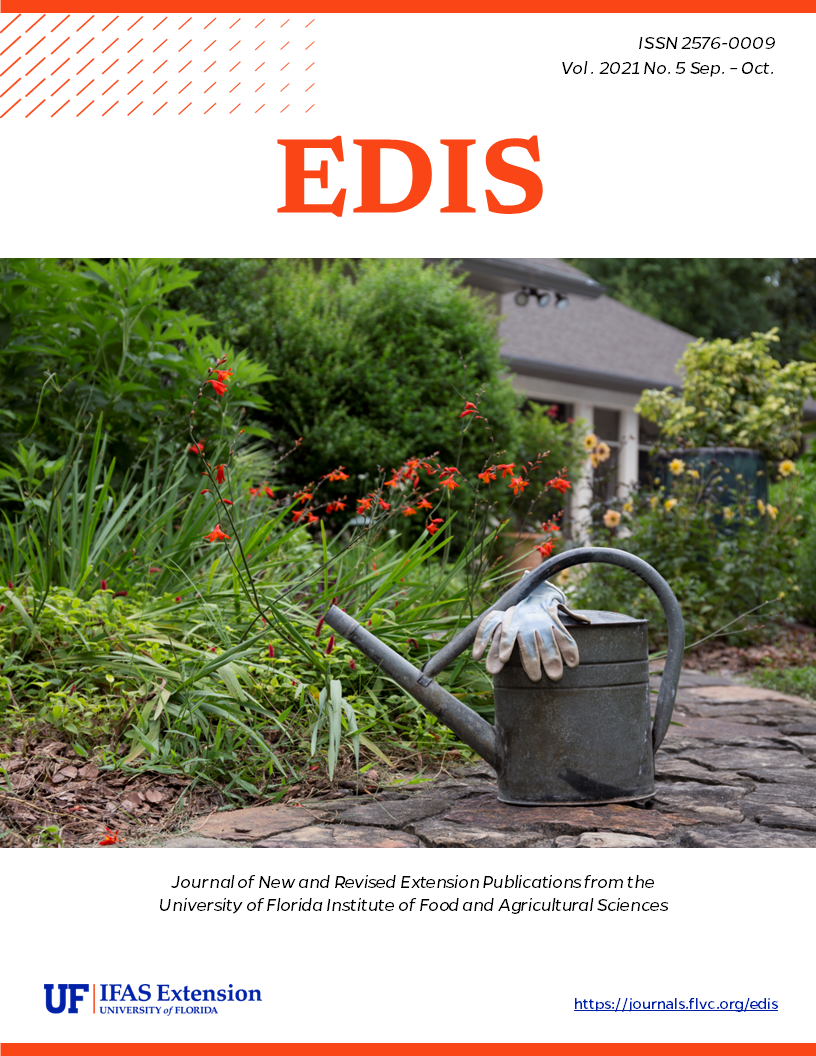Abstract
A profile of the hibiscus bud weevil intended for the use of interested laypersons with some knowledge of biology as well as academic audiences. The hibiscus bud weevil, a pest of China rose hibiscus, originates from northeastern Mexico and southern Texas and can cause large economic losses to hibiscus growers. This fact sheet provides nursery owners, homeowners, and other interested people with information on this serious pest.
References
Bográn CE, Helnz KM, Ludwlg S (2003) The bud weevil Anthonomus testaceosquamosus, a pest of tropical hibiscus. In: SNA Research Conference Entomology. pp 147–149
Capinera JL (2002) Pepper weevil Anthonomus eugenii Cano (Insecta: Coleoptera: Curculionidae). Featured Creatures, University of Florida EENY-278
Clark WE, Burke HR, Jones RW, Anderson RS (2019) The North American Species of the Anthonomus squamosus Species-Group (Coleoptera: Curculionidae: Curculioninae: Anthonomini). Coleopt Bull 73:773. https://doi.org/10.1649/0010-065X-73.4.773
Cross JV., Hesketh H, Jay CN, et al (2006) Exploiting the aggregation pheromone of strawberry blossom weevil Anthonomus rubi Herbst (Coleoptera: Curculionidae): Part 1. Development of lure and trap. Crop Prot 25:144–154. https://doi.org/10.1016/j.cropro.2005.04.002
Eller FJ, Bartelt RJ, Shasha BS, et al (1994) Aggregation pheromone for the pepper weevil, Anthonomus eugenii cano (Coleoptera: Curculionidae): Identification and field activity. J Chem Ecol 20:1537–1555. https://doi.org/10.1007/BF02059879
Hunsberger A, Pena JE (1998) Biodynamics of Anthonomus macromalus (Coleoptera : Curculionidae ), a weevil pest of Barbados Cherry in Florida. Florida Entomol 334–338
Innocenzi PJ, Hall DR, Cross JV. (2001) Components of male aggregation pheromone of strawberry blossom weevil, Anthonomus rubi Herbst. (Coleoptera: Curculionidae). J Chem Ecol 27:1203–1218. https://doi.org/10.1023/A:1010320130073
Loiácono MS, Marvaldi AE, Lanteri AA (2003) Description of larva and new host plants for Anthonomus rubricosus Boheman (Coleoptera: Curculionidae) in Argentina. Entomol News 114:69–74
Mannion C, Hunsberger A, Gabel K, et al (2006) Hibiscus bud midge (Contarinia maculipennis)
Silva D, Salamanca J, Kyryczenko-Roth V, et al (2018) Comparison of trap types, placement, and colors for monitoring Anthonomus musculus (Coleoptera: Curculionidae) adults in highbush blueberries. J Insect Sci 18:. https://doi.org/10.1093/jisesa/iey005
Skelley PE, Osborne LS (2018) Pest Alert Anthonomus testaceosquamosus Linell, the hibiscus bud weevil, new in Florida. Gainesville
Szendrei Z, Averill A, Alborn H, Rodriguez-Saona C (2011) Identification and field evaluation of attractants for the cranberry weevil, Anthonomus musculus Say. J Chem Ecol 37:387–397. https://doi.org/10.1007/s10886-011-9938-z
Tumlinson JH, Hardee DD, Gueldner RC, et al (1969) Sex pheromones produced by male boll weevil: Isolation, identification, and synthesis. Science 166:1010–1012. https://doi.org/10.1126/science.166.3908.1010
United States Department of Agriculture U (2017) Market Value of Agricultural Products Sold Including Food Marketing Practices and Value-Added Products : 2017 and 2012 Census of Agriculture 2017. 275–302

